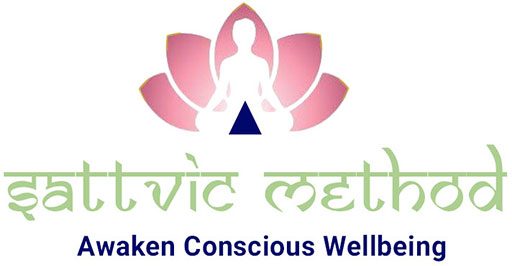The Hindu celebration of Navaratri is the oldest unbroken tradition focusing on the Divine Feminine aspect. As recorded by sages of the yore, the entire creation is the manifestation of this divine feminine principle. Navaratri literally means nine nights. This book provides you with information about how to prepare for Navaratri and celebrations beyond this time.
The celebration involves intense internal and external expressions simultaneously. The inner work involves fasting, meditation, worship, and other rituals, while the outward expressions include engagement in creative expressions such as music, dance, decoration, food, and dressing up. As with all Hindu celebrations, you should celebrate Navaratri with all enthusiasm, but in the spirit of Yetah shakti, to the extent that you can maintain a consistent practice.
Upasana
Upasana is a compound Sanskrit phrase made of two words Upa and Asana. Upa means approaching or getting close to, and Asana means seat. In the context of Navaratri, Upasana takes you closer to the seat of the divine Mother. The seat could be closer in your heart or closer to a visualized space. Upasana can take place through a ritualistic activity or through practices such as meditation. What is unique about Navaratri is the numerous outlets available for offering Upasana during this period.
Your Upasana during Navaratri can be ritual worship. It can be a delicious meal you cook to offer Mother. You can create art or hold a recitation by singing devotional compositions to the divine Mother. If you are a well-coordinated dancer or a trained dancer, you can offer dance as a part of your worship. You can mix and match and choose any number of ways to combine your offerings. Mother receives each of these with intense love in her infinite compassion and blesses everyone offering anything to her.
During Navaratri, the simplest Upasana involves assembling a Kalasha representing the divine Mother and offering flowers, sandal paste, incense stick, lamp, offering of fruits or food you have cooked, betel nut, and camphor light every day. Offering worship at dawn, dusk, or later in the evening are all auspicious times. Make sure you have plenty of time to offer Upasana without feeling rushed or if you are impatient. Likewise, don’t offer worship if you are feeling sleepy or tired.
Types of Upasana
All Upasana must be performed as an offering of devotion. During Navaratri, the object of affection is always the divine Mother. Hindu scriptures give you a choice to engage with the Holy Mother through worship, meditation, or performing rituals. In a state of devotion, you may be able to develop the depth to comprehend the compassion of the divine Mother, who is formless and omniscient, allows herself to be molded into a form that is easy for human beings to hold in their mind.
Three distinct groups of Seva or services can be observed for celebrating divine Mother during Navaratri:
- Sevas that focus on visualization. These activities focus on the mind and controlling the senses in the form of Japa and Dhyana. If you like meditation and are comfortable with repetitions, this group of activities or paths will work well for you.
- Sevas that focus on verbalization. When you are best at establishing a connection through speaking, chanting, and singing, all activities with a vital verbalization element, this path is right for you. These activities involve the vaak or spoken words and the mouth.
- Sevas that focus on manifestation. If you intend to manifest and would like to do a bit of everything, rituals, chanting, and meditation, then puja and ritual worship are the right paths for you. These activities involve numerous intricate, quick movements of the hand accompanied by specific chanting and elaborate processes.
Sri Vidhya Upasana
Navaratri is the most auspicious time for the Sri Vidhya Upasana. The Sri Vidhya rituals are elaborate and require traditional initiation by a Guru who has performed Sri Vidhya Upasana for many decades. However, if you have a Sri Chakra Yantra (picture or metal) or Sri Chakra Meru, you can worship these sacred objects on these auspicious days.
The worship practice of formal Sri Vidhya Upasana is to awaken the Kundalini, lead her through the six Chakras and move to Sahasrara, the crown chakra. Nectar of Kundalini flows from such a union and drenches all the chakras in the process. When Kundalini awakens, you experience great bliss. In the beginning, Kundalini stays for a second or even shorter at the Sahasrara. With constant practice, you can retain her for a longer duration at the Sahasrara. When Kundalini stays permanently in Sahasrara, you will receive enlightenment.
You can offer the following chants for worshiping Sri Chakra Meru or Sri Yantra-
- Guru Prarthana (showing gratitude to Guru who gave you this knowledge)
- Ganesha Prarthana (worship to Ganesha for removing any obstacles)
- Sri Sooktam (hymn offered to Lakshmi)
- Durga Sooktam (tribute offered to Durga)
- Sri Devi Khadgamala stotram (worship offered to Sri chakra)
- Sri Lalitha Sahasaranamam (1008 names offered to mother Lalitha Tripurasundari)
- Durga Sapthashati (9 elaborate chapters that describe Mother’s war with demons)
- Dhoom, Deepam, Neivedhyam (offering incense, lamp, and food)
- Aarthikam (offering camphor)
Here is a Navaratri playlist for your Upasana. You can create your own playlist on Youtube and share it in the comments section.
Upavasa
The powerful, direct, foolproof sattvic method to achieve anything in the outer and inner world is to undertake Upavasa. In sattvic lifestyle, Upavasa can be used for healing. In case you wonder why we have to fast on a happy occasion like Navaratri, read this blog post about the paradox of feasting and fasting.
For Navaratri, devotees observe a strict vegetarian diet without any alcohol or eggs. Some eat only uncooked food, living on fruits and vegetables. Many eat only once a day. Devotees also fast on a liquid diet, consuming only fruit juice, lime, or lemon juice. Others undertake a water fast by drinking only water for nine days. There are several methods for undertaking upavasa as detailed in this blog post.
The goal of upavasa is to keep the body light and alert to the subtle changes in the energy flow. For example, when you eat solid food, your body dedicates many resources to digest it and remove it from the system. Therefore, it is best to eat light food, cutting back on solid food as much as your body can handle, during the period of Navaratri.
“Fasting is the best medicine. Just as poor eating habits cause accumulation of fat deposits and consequent blockage of arteries resulting in heart disease, our suppressed emotions form ‘energy blocks’ disturbing the free flow of energy throughout our body. On the days we fast, the jataraagni is available to dissolve these energy blocks, burn away the excess fat from our bodies and cleanse our system. That’s why we feel light and energetic when we fast.”
~ Sri Nithyananda Paramashivam
Awaken Your Hidden Powers
Hindu sages envisioned the human body as a self-contained energy body that can be activated by the right sounds, food, and rituals. The energy body contains several nodes, commonly known as chakras. There are 108 of these chakras in the body. When we do Upasana, these chakras are activated. And if you are following Upavasa, the energy packs the power into the nodes. An energized node will help you manifest your reality by becoming bold to drop your old patterns, thought currents and find new ways to approach your obstacles. This Navaratri, you can awaken your hidden powers by following the Upasana-Upavasa routine and experience a breakthrough in your life.
What are your plans and goals for Navaratri? Share your goals in response to this blog post.
From all of us here at Living Sattva, we wish you Shubh Navaratri!
P.S: We have new Navaratri e-cards you can share with your friends and family.
P.P.S: Navaratri will be celebrated from October 6, 2021- Oct 15, 2021




